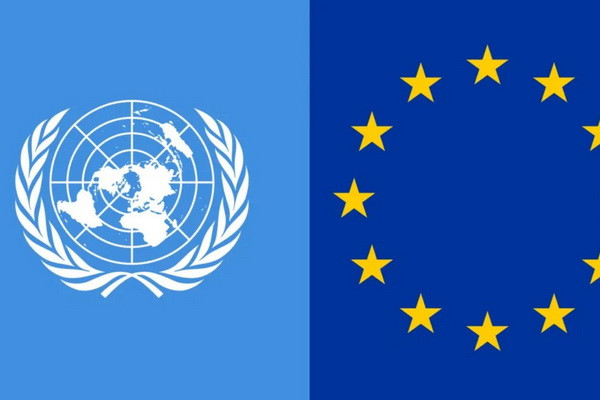
EU and UNESCO celebrate the achievementsof the “Silk Roads Heritage Corridors in Central Asia” regional project
Tashkent, Uzbekistan (UzDaily.com) -- The results of the large-scale regional project ‘Silk Roads Heritage Corridors in Central Asia – International Dimension of the European Year of Cultural Heritage’ were presented in Astana today.
The project is funded by the European Union and has been implemented by UNESCO Regional Office in Almaty since 2018. It aims at preservation and promotion of the cultural heritage of Silk Roads, enhancing the value of tangible and intangible heritage, and strengthening human and institutional potential in heritage management in Central Asian countries. All initiatives within the project aimed at strengthening the role and contribution of culture to the sustainable development of the region.
“Today we work to develop Trans-Caspian Transport Corridor connecting Central Asia with Europe. Actually, we are reviving an old Silk Roads which were connecting us centuries ago. The Heritage project has helped to preserve the heritage of our ancestors and to promote this famous cultural treasure uniting all of Central Asia. We hope that this work will help us to build the future based on the best traditions of the past, and will attract numerous tourists willing to make their own journeys into the richness of local nature and cultures, for the benefit of local people”, said Mr. Kęstutis Jankauskas, Ambassador of the European Union to Kazakhstan.
Project’s main activities focused on rehabilitation of heritage sites along the Silk Roads, development of tourism potential based on cultural heritage as well as preservation of intangible cultural heritage in beneficiary countries. Rehabilitation works were carried out at such heritage sites of Central Asia as Medieval city of Kulan (Kazakhstan), Medieval city of Krasnaya Rechka (Kyrgyzstan), Tajik National Park (Tajikistan) and World Heritage Property at Khiva (Uzbekistan). Project experts also revised and extended the ‘Training Handbook for Silk Road Heritage Guides’ publication in English and Russian, and created a special section devoted to Silk Road on the international online platform ‘World Heritage Journeys’. This platform allows anyone to learn about World Heritage sites.
“Silk Roads Heritage Corridors in Central Asia – International Dimension of the European Year of Cultural Heritage’ project contributes to UNESCO Regional Office’s long tradition of Silk Roads studies at UNESCO since 1980s. Through this initiative, we also trying to create opportunities and conditions that could stimulate the development of local communities. We believe that this project is an important component of the cultural dialogue between countries and generations”, concludes Mr. Amir Piric, Director of UNESCO Regional Office in Almaty.
At the event, a virtual exhibition of 60 historical unique museum showpieces of the Silk Road objects, provided by museums of Kazakhstan, Kyrgyz Republic, Tajikistan, Uzbekistan and Turkmenistan. Its uniqueness is the fact that anyone can see all 60 objects from six different countries on one single online platform in 2D and 3D.